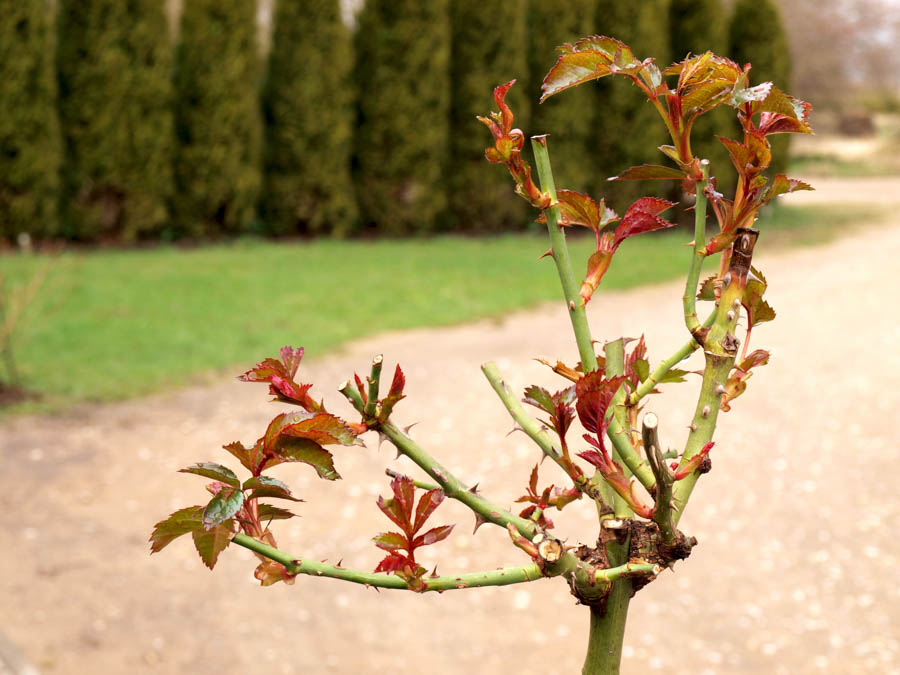Roses in Spring: 7 Tasks for March

In many areas of California, March is the month when roses break dormancy, or begin sustained growth over spring, summer and into fall. Here are seven tasks for roses in spring:
- Water and fertilize most rose varieties when they show the first new growth in early spring.
- Fertilize actively blooming roses at the end of bloom cycles as they set new buds and grow new leaves.
- Select and plant container roses.
- Cut flowers of roses in bloom.
- Prune expired and dead blooms back to a desirable bud or node for future growth and blooming. Prune crossing and unpromising new spring growth. Trim off blind shoots, which are short stems that end in leaves and never produce flowers.
- Monitor roses every 2 to 3 days and respond early to pests and diseases.
- Add 1 to 2 inches of mulch to new rose plantings and maintain 2 inches mulch around established plants.
GardenZeus has complete recommendations for every rose class for your GardenZeus zone, including Old Garden Roses as well as hybrid teas and grandifloras, floribundas, climbers, shrubs, miniatures and groundcovers. Don’t know your GardenZeus zone? Click here.
GardenZeus Tip: Most rose varieties need full sun, at least 5 hours of direct sun per day, with 7 or more hours of sunlight being ideal during active growing and blooming periods. When receiving less sunlight, many roses will be unreliable or sporadic with blooming, and may become leggy. Varieties that are not heat tolerant will suffer and may become prone to diseases and pest infestation in direct sun in during summer, or may die from diseases or pest infestation as a result of being stressed by heat.
Other articles of interest:
GardenZeus Quick Tips: Purchasing Roses
Should Organic Gardeners Fertilize Their Roses?
Six Tips for Growing Roses in Containers

